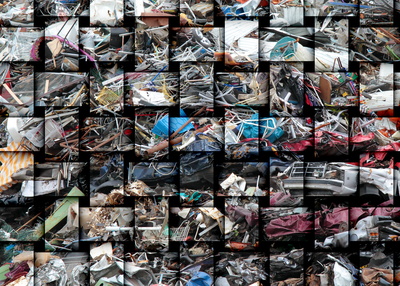“We have seen a softening over recent weeks but it is felt that we have reached the bottom and should see a more balanced market for the remainder of 2017,” he said in New Delhi.
Divisional President William Schmiedel of Sims Management Global Trade agreed that, in terms of ferrous scrap pricing, “we have experienced quite a volatile marketplace, with traded cargoes at levels close to US$ 240 all the way up to US$ 360-370 per tonne”. He added: “This volatility is typical in a market in the recovery stage, with fixing levels finding new highs then backing off, but always only to a level that exceeded the previous bottom.”
Despite a strong scrap market for most of the year, India has been priced out of the international marketplace and its imports are expected to be around 40% lower than last year, it was noted by Mr Bird. “Overall steel demand has been sluggish. On a positive note, Bangladesh has been driving demand for scrap in the Indian Subcontinent with 2 million tonnes expected (to be imported) for 2017.”
In the USA, car demand has been slightly off – although the recent loss of an estimated 500,000 vehicles as a result of hurricanes Harvey and Irma appears to have spurred additional sales as these once again peaked at more than 17 million units on an annualised basis in September.
In a “World Steel Recycling in Figures” update provided by Statistics Advisor Rolf Willeke, he highlighted that China had exported almost 880,000 tonnes of steel scrap between January and August 2017, less than 300,000 tonnes of which was shipped out in the first half of the year.
In the first half of 2017, the EU-28 had remained the world’s leading steel scrap exporter following an increase in its overseas shipments of 15.8% to 9.961 million tonnes, with the four biggest buyers being Turkey (+19.5% to 5.975 million tonnes), Pakistan (-6.4% to 0.718 million tonnes), the USA (+31.5% to 0.651 million tonnes) and Egypt (+118.5% to 0.614 million tonnes).
Unsurprisingly, the Ferrous Division meeting in New Delhi focused particular attention on India. “India is an extremely important market for the ferrous scrap industry and we are delighted that at last we have our global conference in this wonderful country,” commented Mr Bird.
The world’s second-largest steel scrap importer in 2016 on 6.4 million tonnes, India is currently the third-largest steel producer globally and will soon take over second position from Japan, according to guest speaker R. R. Ganesh, Director of Sourcing at Jindal Stainless, India’s largest stainless steel manufacturing group. “My country’s rapid urbanisation will fuel steel production,” he told the meeting. “Demand for (stainless) steel scrap is growing rapidly in India, but domestic scrap availability remains minimal. Therefore, we will remain dependent on steel scrap imports for a long time.”
Jindal Stainless is to expand the melting capacity of its Jajpur-based Odisha stainless steel plant by 2.2 million tonnes to 3.2 million tonnes over the next five years, Mr Ganesh also told his audience.
Shri Sunil Barthwal, Joint Secretary at the Indian Ministry of Steel, provided the meeting with an overview of developments in the steel industry, with a focus on his own country.
And market analyst Becky E. Hites of Steel-Insights LLC in the USA zoomed in on how the Chinese government had succeeded in closing 120 million tonnes of annual induction furnace capacity at 500 sites over the past 12 months as part of the government’s anti-pollution campaign, resulting in scrap exports from China to India and South Korea, among other Asian countries. These closures have been made quite aggressively, according to Ms Hites. “They cut water and electricity while trucks are sent to confiscate and literally pick up machinery,” she noted, adding that some of the closed furnaces have migrated to India.










